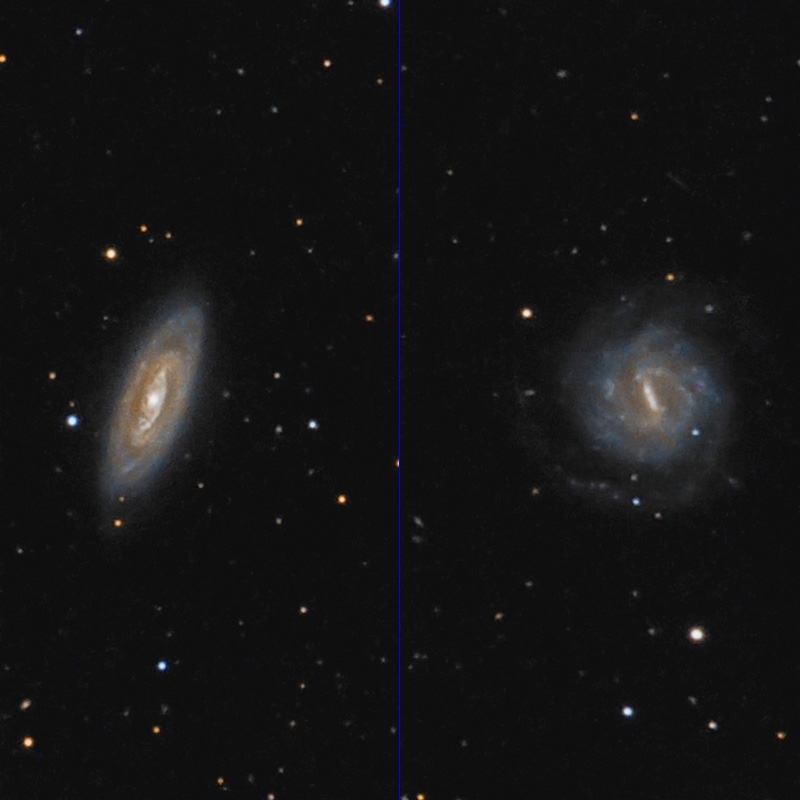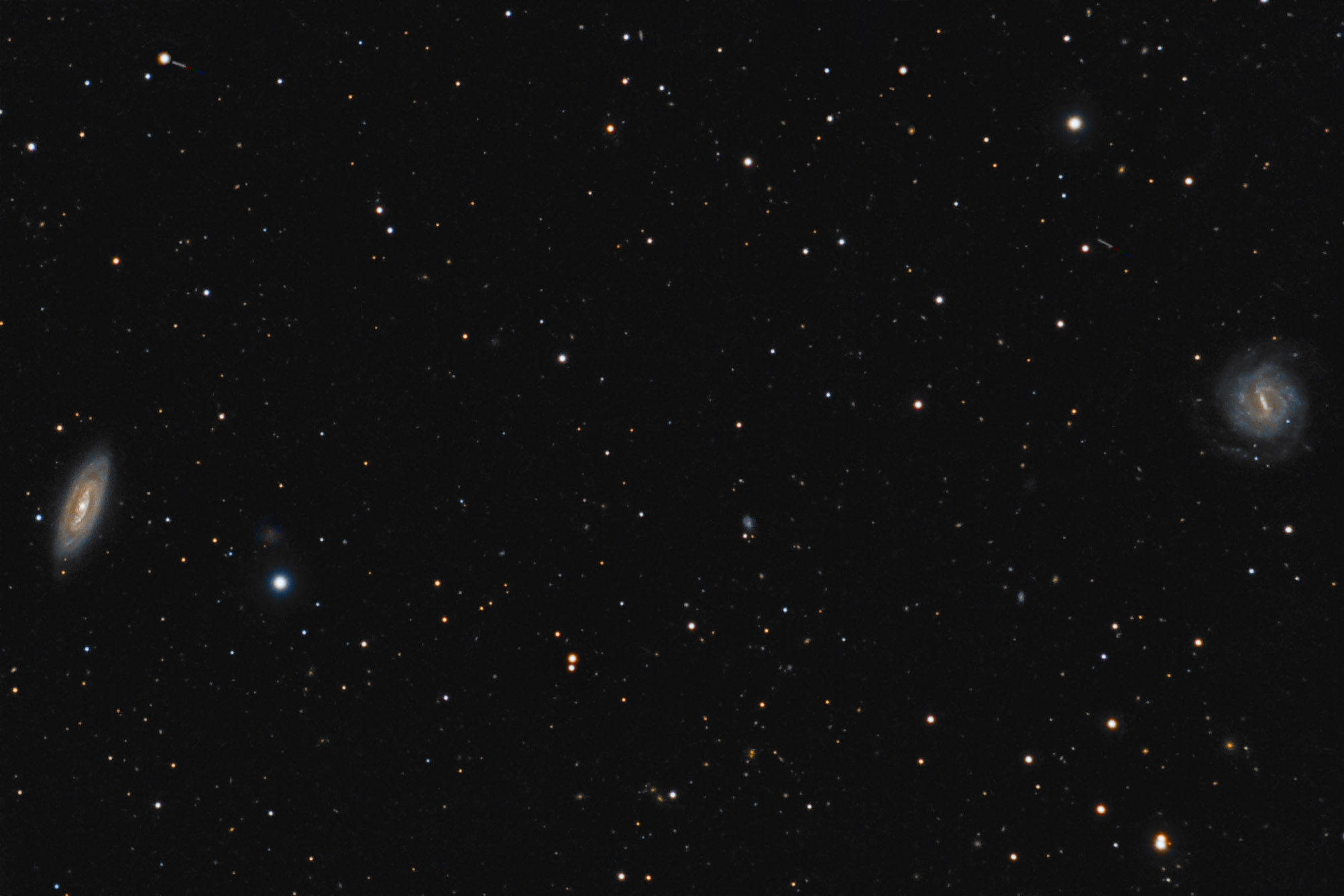Object name: NGC0600Designation(s): NGC0600, NGC0615, My target for this image was NGC 615 on the far left in central Cetus. I moved it left when I saw NGC 600, a rather interesting low surface brightness barred spiral could be fit into the frame. The core and bar of it are quite bright but the arm structure rather faint without much fine detail but for all the star clouds on the faint arm to the south that seems pulled away from the rest of the galaxy.
NGC 615 has a strange dust lane that cuts right across the inner spiral structure. This makes it rather similar to NGC 210 I posted back on September 28, 2010. In the case of NGC 615, the dust lane is far more obvious, however, but doesn't make an "X". NGC 615 is seen more edge on which might make the dust more obvious.
NGC 600 was discovered by William Herschel on September 10, 1785 but isn't on either Herschel 400 observing list. NGC 615 was also discovered by William Herschel. He found it on January 10, 1785, 8 months before finding nearby but fainter NGC 600. NGC 615 is on the original Herschel 400 observing list. My notes from a fair but humid night using my 10" f/5 reads: "Very small, faint round galaxy. Seems to have a starlike nucleus surrounded by a bright ring located half way to the edge of the halo. Very interesting but hard to see due to the small size and need for averted vision." Odd I said round when it is very oval. Seems I wasn't seeing but the red portions of the galaxy and missed the faint outer blue arms entirely. I needed 150x to see it very well the notes indicate. I made no mention of NGC 600 so like Herschel likely missed it at the time.
Both galaxies have a redshift that puts them about 70 million light-years distant and thus likely part of the same local group. Their size is similar at about 71,000 light-years in diameter. If they are at about the same distance then their separation is only about 620,000 light-years making them much closer to each other than we are to M31.
The field isn't well documented in NED. The only other galaxy in the field to have a redshift is the dwarf galaxy KDG 007. While its redshift is almost the same as NGC 615 indicating it may be a satellite of it the only non-redshift measurement puts it much closer. I can't follow the reasoning used for this however as it assumes this dwarf is a member of the NGC 1313 galaxy group. Now that group is nearly two hours east and almost 60 degrees south of the dwarf! Again that famous Asian astronomer Sum Ting Wong may have struck again. But since NED includes that reference I included it.
6th magnitude HD 9562 was moved out of the field at the top. Even so, it cast a huge blaze of light into the frame that was a pain to deal with. Fortunately, this is a rather sparse field for faint distant galaxies so I doubt it cost much detail to deal with it.
Two rather bright asteroids and 3 faint ones photobombed the frame. See the annotated image for details. If not for them I'd not have made the annotated image due to lack of data on this field.
14" LX200R @ f/10, L=4x10' RGB=2x10', STL-11000XM, Paramount ME Related Designation(s):2MASS J01330529-0718413, 2MASS J01330537-0718383, 2MASS J01350569-0720252, 2MASX J01330529-0718410, 2MASX J01350567-0720250, 2RXP J013305.7-071835, 6dF J0133053-071841, 6dF J0135056-072025, 6dF J0135057-072025, 6dFGSv 00894, AGC 410258, AGC 410271, AKARI J0135054-072028, APMUKS(BJ) B013034.83-073405.6, CGS 141, GALEXASC J013305.28-071843.7 , GSC 4687 00178, GSC 4687 00203, HDCE 0081 NED006, HDCE 0081 NED007, HIPASS J0133-07, HIPASS J0135-07, IRAS 01325-0735, IRAS F01305-0734, IRAS F01325-0735, LDCE 0095 NED006, LDCE 0095 NED007, LGG 027:[G93] 004, LGG 027:[G93] 005, LQAC 023-007 002, MCG -01-05-007, MCG -01-05-008, NGC 0600, NGC 0615, NGC0600, NGC0615, NSA 129980, NSA 130040, NVSS J013505-072025, PGC 005777, PGC 005897, USGC S056 NED02, USGC S056 NED03, | | 

